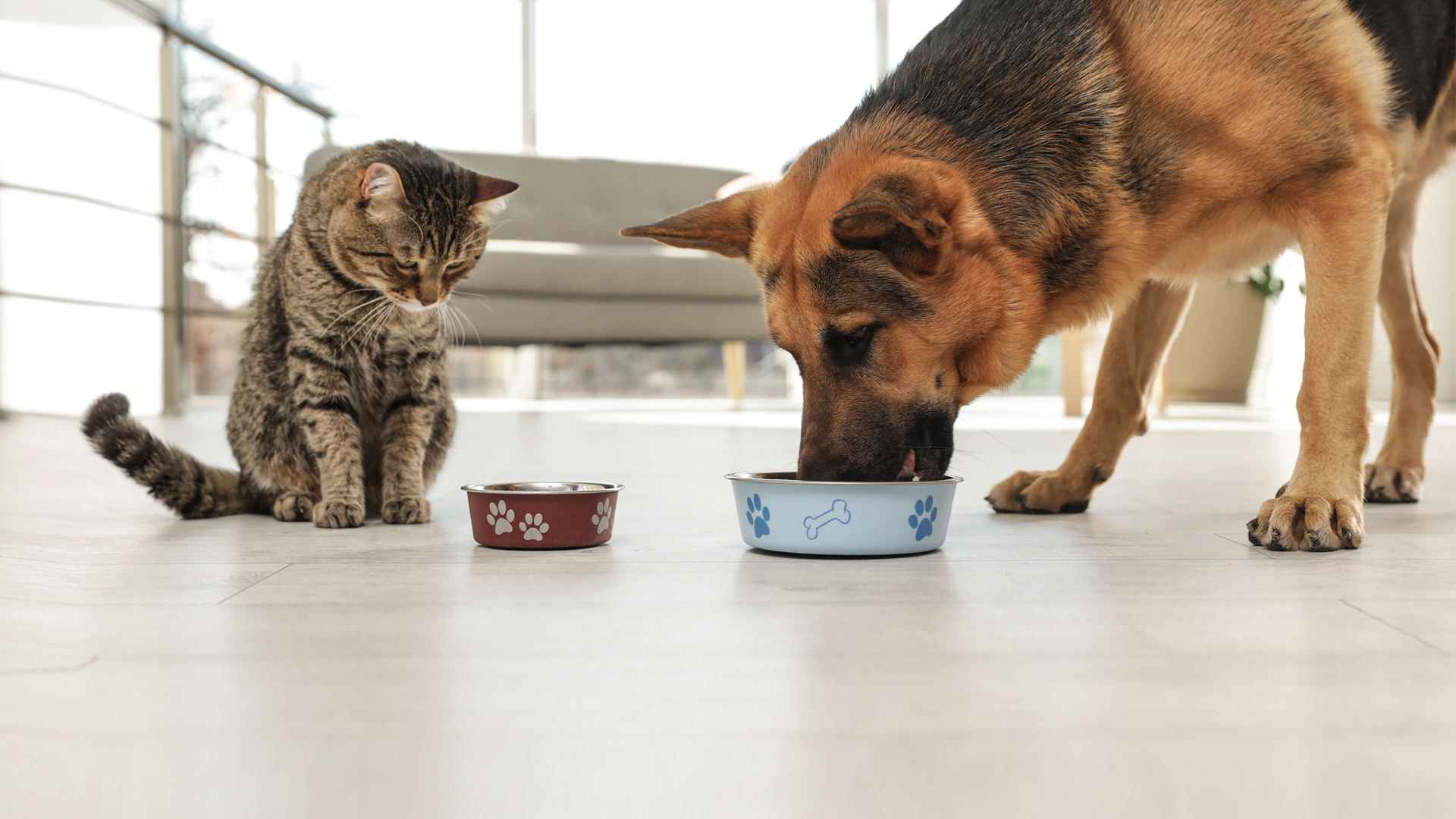how to choose proper nutrition for your pet
With so many different food options, knowing what to feed your furry friend can be difficult. If you’re stressed trying to figure out the appropriate diet for them, we’ve got you covered.
We love talking about pet food and nutrition at Banfield, and we offer many helpful resources that you can find here. But in this blog, we will review the basics, like what ingredients and nutrients you should look for in dog and cat food and how to choose a healthy diet.
Which nutrients your pet needs
There are four main nutrients that are important for all pet food:
Critical carbohydrates: Oats, brown rice, whole wheat, corn, barley, and millet are all examples of critical carbohydrates you often see in pet food. These types of carbohydrates help give your pet energy and fiber for digestion and firm poops. They also help your pet to be more satisfied with the volume of food and calories they eat.
Protein: Protein found in pet food is not just animal protein; it can also be soy, corn, wheat, and oats. These proteins help with muscle maintenance, tissue repair, skin and coat health, blood formation, and immune system support. Protein is a critical part of the diet for all pets and although some proteins safely come from vegetable sources, there are certain essential amino acids (the building blocks of proteins) that are more common and easier to digest in meat-based proteins. Some species of pets like cats are obligate carnivores and need to eat mostly meat diets.
For cat food, an extra important nutrient is taurine, a type of amino acid that is found in proteins. It helps with eye health, heart health, and blood flow.
Vitamins and minerals: There are many types of vitamins and minerals found in pet food. Here are just a few:
- Calcium helps support bone and teeth formation as well as muscle function and works with phosphorus
- Magnesium helps with bone formation and enzyme function
- Zinc helps support the immune system and skin and coat
- Potassium helps support muscles and the nervous system
- Vitamin A helps support the immune system, vision, and skin and coat
- Vitamin B complex helps with energy and the nervous system
- Vitamin C helps the immune system
- Vitamin D helps with calcium absorption and bone health and immunity
- Vitamin E helps the immune system and skin and coat
Water: Water is essential for all living things, and dogs and cats are no exception. Some animals, including cats, don’t always like to drink water so we need to encourage them with water fountains and wet or canned food, which contains higher amounts of water.
What to consider when buying pet food
Your pet’s age, health, and lifestyle are all important factors to consider when shopping for pet food. For example, if your cat has kidney disease, your veterinarian might recommend renal health cat food, or if your dog has skin issues, your veterinarian might recommend food that is designed to support their skin and coat.
Also, what a young dog or cat needs differs from an older dog or cat. At about 12 months of age, kittens go from eating kitten food to adult food, and the same goes for puppies as well, although it’s always a good idea to check in with your veterinarian about the specific needs of your pet.
What to look for when shopping for pet food
When shopping for pet food, you’ll want to look for AAFCO (the Association of America Feed Control Officials) and FDA (United States Food and Drug Administration) logos. Why? These two agencies help regulate the pet food industry and make sure what is in pet food is safe for your pet’s consumption. You’ll also want to look for a digestible protein like meat, grain, soy, or pea at the top of the ingredient list.
Other ingredients to look out for include animal fat, animal protein, beet pulp, brewer’s rice, corn gluten meal, ground whole corn, ground whole wheat, meat and bone meal, meat or chicken by-product meal, vegetable oil, and wheat gluten. These ingredients provide a balanced diet and help support pets’ overall health.
Please be sure to speak with your veterinary team about the brands and types of food they would recommend for your specific pet.
Check out our helpful resources on how to read pet food labels.
 Mites and mange
Mites and mange Podcast - Not Just Fluff
Podcast - Not Just Fluff











